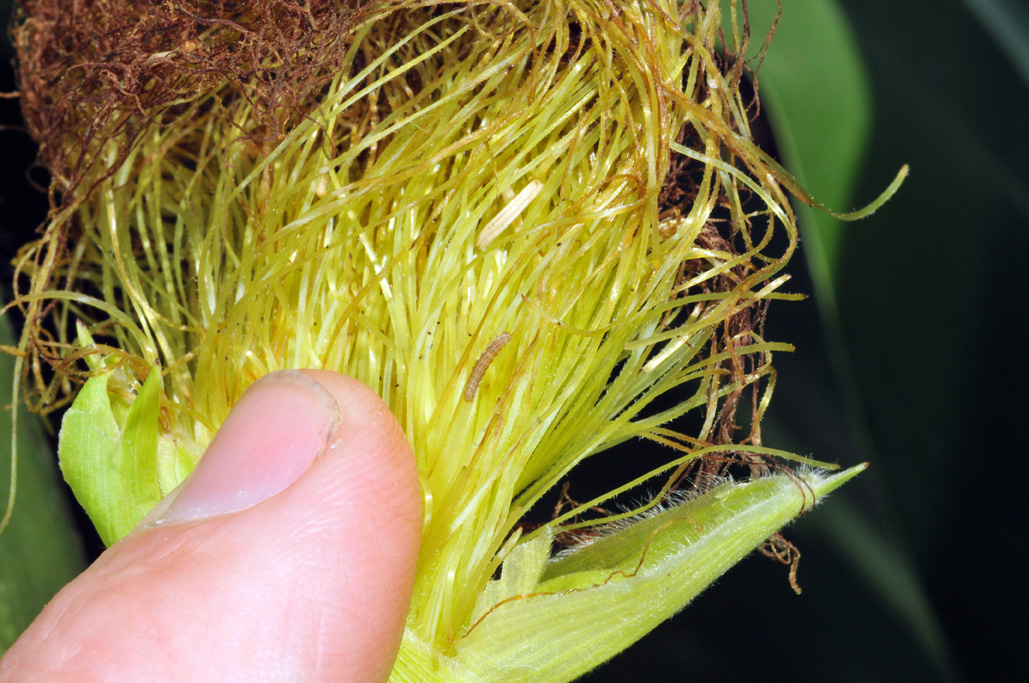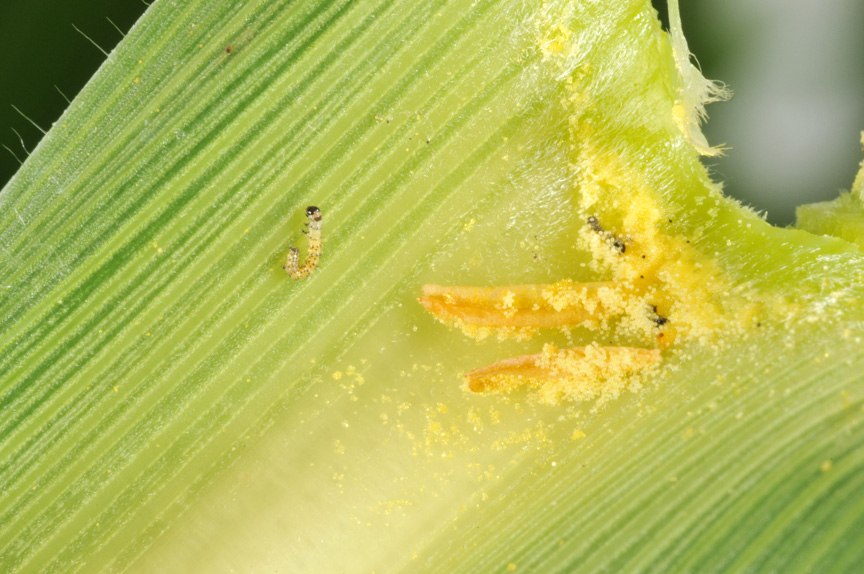The vast majority of cornfields in the northwestern counties of Indiana have reached or have passed pollination. However, we know from past year’s data that western bean cutworm moths are still flying and laying eggs. In the last week or so, scouting emphasis should shift from sampling for egg masses in pre-tassel corn to finding early instar (VERY tiny and elusive) larvae in the ear zone of pollinated corn. The following video will hopefully assist you in scouting for and understanding this pest while it attempts to establish in developing corn ears. Remember, this is a pest that requires scouting to manage properly. The vast majority of Bt corn hybrids planted currently will not offer control of these larvae. Insecticides (i.e. pyrethroids) work well, but timing is the key. The eggs and emerging larvae have to be contacted with sprays, either directly at the time of spraying, or by exposure via walking on residues on the leaves. These tiny larvae are the most vulnerable stage, and if/when they survive the initial walk from the egg mass to leaf axils and eventually the developing ear, control is difficult if not impossible. Bottom line: scouting and timely insecticide treatments at a 5% threshold are your only reliable option.
Youtube video: Scouting Western Bean Cutworm Post-Whorl Corn

Finger pointing to young western bean cutworm larva crawling through the silks and soon down to the kernels. (Photo Credit: John Obermeyer)



